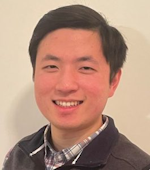Learning Optics with Austin: Lesson 4 – How Does Light Travel? Part II: Refraction
Why does a pencil look like it is snapped in half when partially placed in a container of water? The short answer is refraction.
A more detailed explanation is that the rays of light bends when they pass from one medium to another. This bending of light from air to water produces a virtual image of the pencil in water that is different from the pencil’s actual position.
The way we measure refraction is through the refractive index (n). We define ⍺ to be the angle of incidence and Ɣ to be the angle of refraction. By the relationship sin(⍺) / sin(Ɣ) = n0 / n1, the refractive index (n) = n0 / n1. Thus, the larger n is, the smaller the angle of refraction which also means a greater bending of light.
Equation for Refractive Index
While it is the case when light travels from air to water that the angle of refraction is smaller than the angle of incidence, this is not always true. In fact, if light were to travel from water to air, then the angle of incidence would be greater than the angle of refraction. What is always true though, is that the angle of incidence is equivalent to the angle of reflection. This brings us back to the topic of reflectivity and transmission covered last week.
Reflection, Refraction, and Transmission Combined
Not all light that hits a surface goes through refraction. Depending on the conditions of the surface, light is also reflected. This is why the equation for reflectivity and transmission adds up to 100%. Thus, a material with high reflectivity will have low transmission and vice versa. Reflectivity and transmission are two crucially related variables that are considered in the designing of optical components.

Austin from Shanghai Optics Inc
Hello! My name is Austin and I am the host for this blog. I graduated from Rutgers in May 2021 with a Bachelor’s degree in Statistics-Mathematics and History. I interned during the summer of 2021 at Shanghai Optics working on data cleaning and analysis. I was later offered to work full-time starting in September. While my initial role was in data analytics, I realized that my knowledge of the company’s products was quite shallow as a key skill for any well-trained data analyst is to know your data. That’s how I got started on my journey in learning about optics.
I found physics interesting but challenging in high school. I did not particularly enjoy classical physics and a seminar in quantum mechanics flew over my head in college. As I see first-hand how our optics works in different applications, I’m quickly beginning to realize that Photonics has the potential to shape the present and the future. Because of my newfound enthusiasm, management took notice and I am fortunate enough to begin a Physics/Photonics class sponsored by Shanghai Optics in the fall of 2021. This blog is part of my experience in taking the class and sharing with you all the wealth of knowledge I’m acquiring!
Aside from optics, some of my personal interests include studying history and going on hikes. Both activities are great opportunities to talk with other people so feel free to ask me any questions on my personal interests or the materials I post!


